Chapter VI. The Pike (Esox)
Description
This section is from the book "Fishing", by Horace G. Hutchinson. Also available from Amazon: Fishing.
Chapter VI. The Pike (Esox)
The Esocidey with the pike and their allies, constitute a group, or sub-order, the Haplomi, distinguished from the Malacopterygii by the absence of the so-called mesocoracoid arch or bony bridge on the inner side of the shoulder-girdle, to which allusion has been made in defining the preceding sub-orders.1 They are a small family of carnivorous fresh-water fishes with the vertical fins (the dorsal and the anal) inserted far back and opposite to each other, and the pectoral fins placed very low down; they include the pike, of predaceous habits, unsurpassed in greediness and voracity, and the small and insignificantlooking Umbra, with moderately large gape and feeble dentition, of which one species, the " Hund fisch" (£7. crameri), inhabits the stagnant waters of Austria-Hungary, whilst the second, the " Mudfish "
(U. limi), is found in the swamps and ditches of Canada and the north-eastern United States, often remaining embedded in the mud of prairie sloughs and bog-holes. The range of the Esocida is restricted to the cold and temperate parts of the northern hemisphere.
1 See under Saltnonidcey vol. i. p. I.
Only five species of pike are distinguished. The best known, Esox lucius, growing to a length of four feet, inhabits nearly the whole of Europe, with the exception of Greece and the Spanish Peninsula, and is also found in Northern Asia, and the northern parts of North America, right across from Alaska to Canada and New York. The latter part of the world possesses besides three other species: the maskinongy, or muskallunge (E. nobilior), the giant of the family, which reaches twice the length of our European pike, specimens weighing 100 lbs. or more being on record; the salmon pike (E. ohiensis), growing to five feet; the pickerel (E. reticulatus), growing to two feet, and the banded pickerel or brook pickerel (E. americanus), which never exceeds a foot in length.
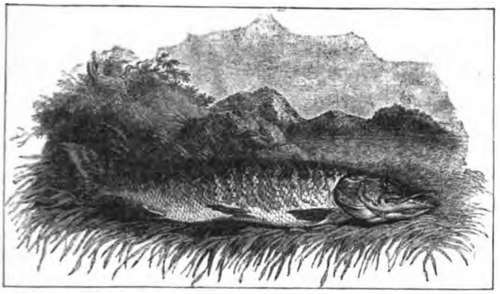
The distribution of these American species is as follows: The maskinongy lives in all the Great Lakes, the upper St. Lawrence River, certain streams and lakes tributary of the Great Lakes, a few lakes in the upper Mississippi valley, and also in Canada, north of the Great Lakes. The salmon pike is from the Chautauqua Lake, the Ohio basin, and small lakes in Northern Wisconsin and Minnesota. The pickerel1 is found from Maine to Florida, Louisiana, Arkansas, and Tennessee, common everywhere east and south of the Alleghanies; whilst the banded pickerel occurs only east of the Alleghany mountains from Massachusetts to Florida. Remains of Esox have been found in various fresh-water deposits in Europe as far back as the Oligocene; very perfect specimens have been obtained from the Upper Miocene beds of Oeningen, in Baden. As observed by Brown Goode, the distribution of the common pike throughout the northern regions of Europe, Asia, and America, indicates that this species was in existence at a very early date, geologically speaking, before the two continents became so widely separated as they are at the present time.
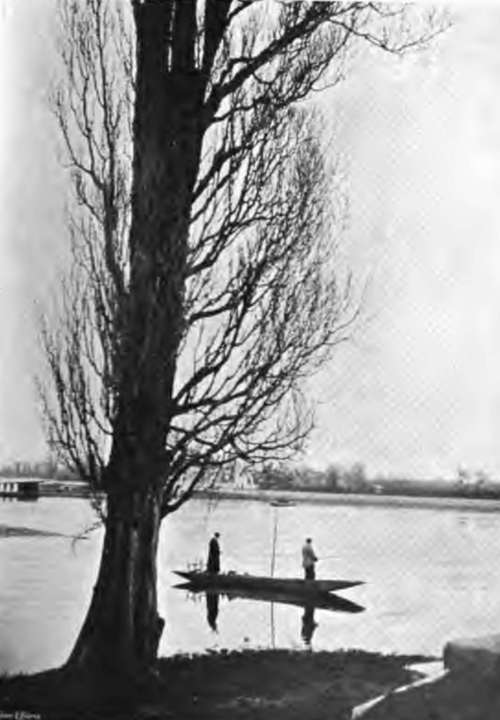
10.- On Broad Waters.
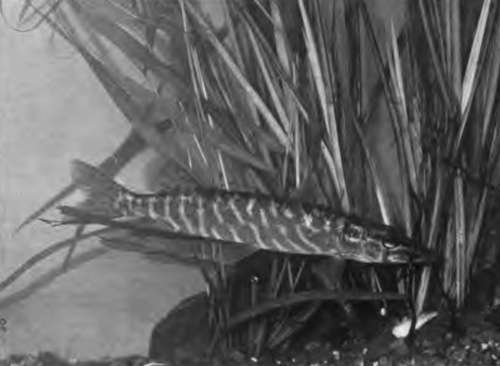
11.- Lying In Ambush.
1 This name was originally intended in this country to denote a young pike, but has been restricted in America to the small species. In some parts of America the pike-perch, Luciopercay are also called pickerel.
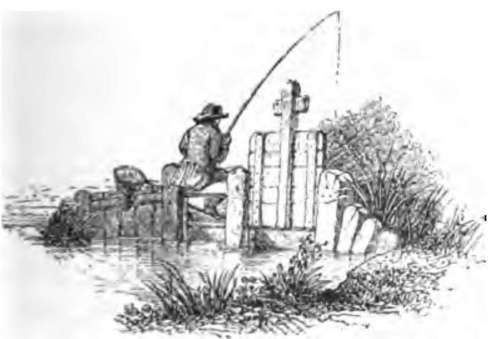
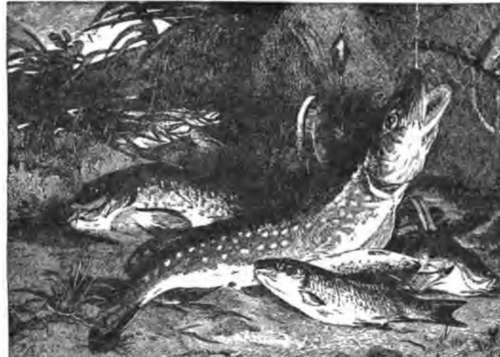
Continue to:
- prev: Fishing-Rods And Tackle For Mahseer. Continued
- Table of Contents
- next: Chapter VII. Fishing For Pike: The Quarry
